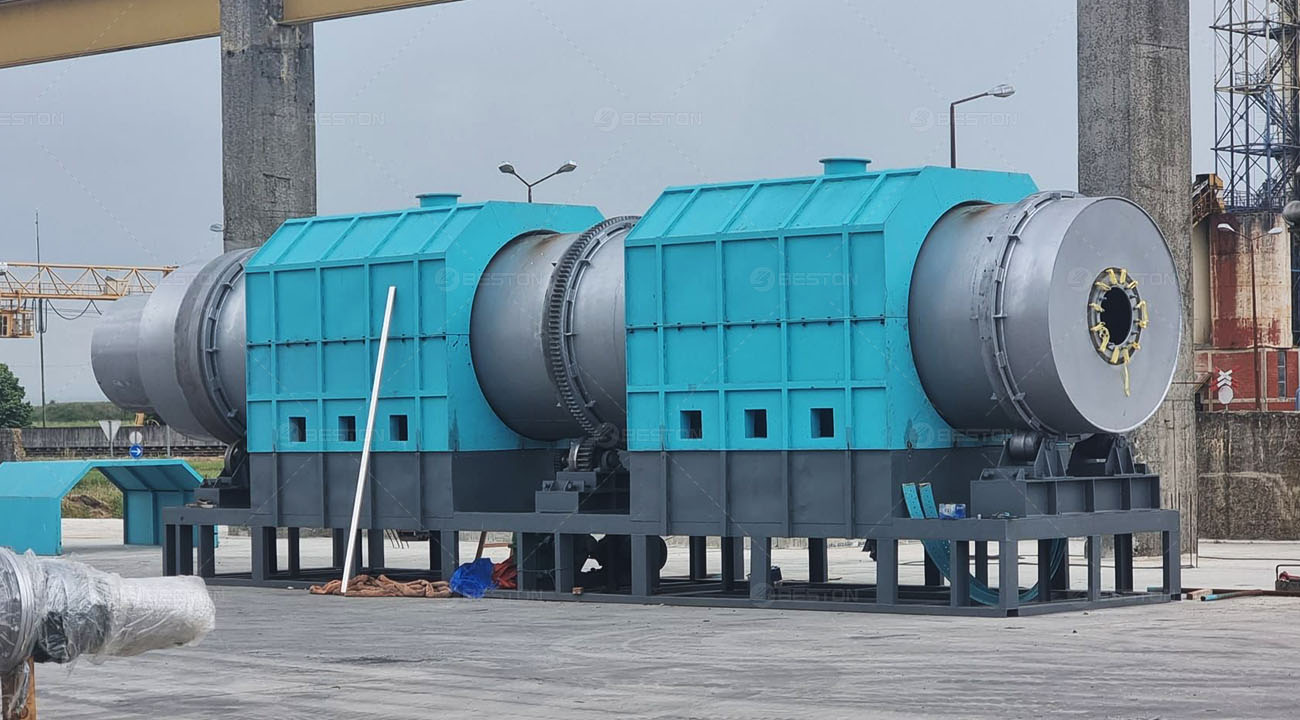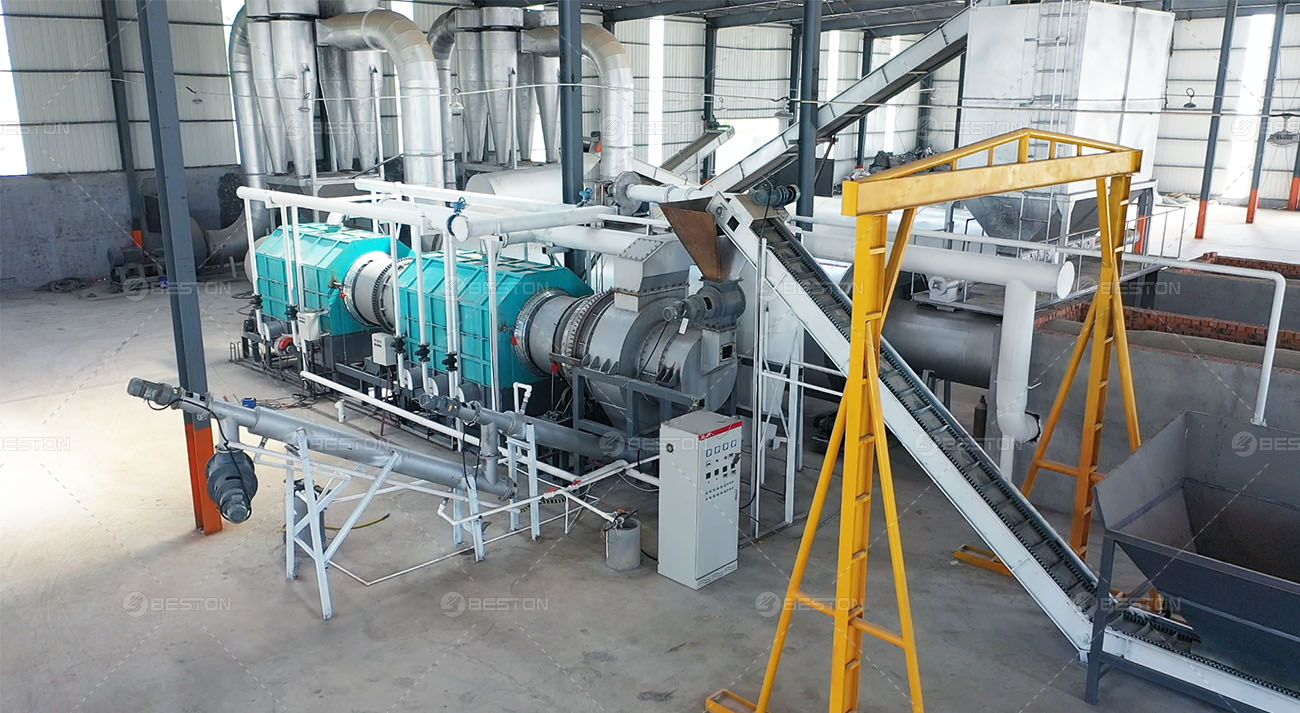Waste Biomass to Biochar: Understanding Biochar Production Equipment
Introduction
In the realm of sustainable agriculture and environmental conservation, biochar stands out as a versatile and potent ally. Produced through the pyrolysis of waste biomass, biochar’s impact on soil fertility, carbon sequestration, and greenhouse gas mitigation cannot be overstated. To unravel the core of this eco-friendly transformation, we embark on a journey through the intricacies of biochar production equipment.

The Significance of Biochar in Sustainable Agriculture
Firstly, biochar, a carbon-rich material derived from organic sources, has earned its stripes as an exceptional soil conditioner. Its ability to enhance nutrient retention, improve water-holding capacity, and support beneficial microorganisms in soil ecosystems makes it a game-changer in sustainable agriculture.
The Role of Waste Biomass in Biochar Production
Secondly, waste biomass, a resource often underutilized or discarded, is the lifeblood of biochar production. This article delves into the various types of biochar production equipment, their working principles, and the intricate factors that influence biochar quality.
Biochar Production Basics
Pyrolysis: The Heart of Biochar Production
At the core of biochar production lies the thermal conversion process called pyrolysis. During pyrolysis, waste biomass is subjected to high temperatures in the absence of oxygen, causing it to break down into volatile gases, liquid bio-oil, and solid biochar. The process parameters and equipment play a pivotal role in determining the quality of the resultant biochar.
Key Factors Influencing Biochar Quality
Temperature Control
First and foremost, precise temperature control during pyrolysis is critical for biochar quality. Varying temperatures influence the chemical composition of the biochar and its porosity, which in turn affects its effectiveness in soil.
Feedstock Selection
Secondly, the choice of feedstock directly impacts the biochar’s properties. Different types of biomass, such as wood, crop residues, and even animal manure, offer unique characteristics that make them suitable for distinct applications.
Residence Time
Moreover, the duration of exposure to high temperatures, known as residence time, affects the transformation of biomass into biochar. Longer residence times often result in higher carbon content and greater stability in the biomass pyrolysis plant.
Types of Biochar Production Equipment
To execute the pyrolysis process, a range of equipment options is available, each with its own set of advantages and considerations.
Continuous Pyrolysis Reactors
Continuous pyrolysis reactors are designed for uninterrupted operation, making them suitable for industrial-scale biochar production. Two notable types of continuous systems are rotary kilns and fluidized bed reactors.
Rotary Kilns
Firstly, rotary kilns offer efficient heat transfer and consistent temperature control, making them ideal for large-scale biochar production.
Fluidized Bed Reactors
On the other hand, fluidized bed reactors provide a higher degree of control over temperature and residence time. They are well-suited for biochar production from various feedstocks.
Batch Pyrolysis Reactors
For smaller-scale or research-oriented biochar production, batch pyrolysis reactors are designed. Two common types of batch systems are drum kilns and top-lit updraft (TLUD) gasifiers.
Drum Kilns
Drum kilns are simple and cost-effective. This makes them accessible for small-scale operations and research purposes.
Top-Lit Updraft (TLUD) Gasifiers
Furthermore, TLUD gasifiers are compact and offer efficient combustion, making them suitable for biochar production in resource-constrained settings.

Continuous vs. Batch Pyrolysis
The choice between continuous and batch pyrolysis systems depends on the specific requirements of the biochar production process.
Advantages and Disadvantages of Continuous Systems
Continuous systems offer higher production capacities and operational efficiency. However, they may require significant investment. As such, they are best suited for large-scale production.
Advantages and Disadvantages of Batch Systems
In contrast, batch systems are more accessible and affordable. This makes them an excellent choice for research, small-scale, and community-based biochar production.
Matching Equipment to Specific Applications
Finally, selecting the right pyrolysis equipment hinges on the scale of production, available resources, and the desired biochar characteristics. The choice should align with the unique needs of the application. In addition, mobile biochar machine is a new option for small-scale automated production.
Waste Biomass Feedstock Selection
The quality and suitability of the biochar are closely tied to the selection of the waste biomass used as feedstock.
Biomass Sources and Availability
Waste biomass can be sourced from a variety of agricultural residues, forestry byproducts, and organic waste materials, each with its own regional availability.
Feedstock Considerations for Biochar Quality
Moisture Content
Firstly, the moisture content of the feedstock affects the energy efficiency of the pyrolysis process. Low moisture content is desirable to prevent energy loss.
Particle Size
Secondly, the size of the biomass particles plays a role in temperature distribution and the biochar’s physical properties. Uniform particle size ensures consistent quality.
Ash Content
Moreover, high ash content in the feedstock may result in a biochar product with unwanted impurities. Understanding and managing ash content is crucial.
Advanced Biochar Production Techniques
As biochar gains popularity, advanced techniques are emerging to maximize its potential. Therefore, a manufacturer with advanced technology is trustworthy. Beston Group Co., Ltd. is a good choice
Co-Production with Heat and Energy
First and foremost, some biochar production systems are designed to simultaneously generate heat or energy, increasing the overall efficiency of the process.
Gasification and Syngas Utilization
Secondly, gasification processes can produce syngas, a valuable resource that can be utilized for various applications, including heat and power generation.
Integration with Circular Economy Models
Finally, biochar production can be integrated into circular economy models, where waste biomass is used to create value in an eco-friendly, sustainable manner.
In conclusion, understanding the intricacies of biochar production equipment is essential for harnessing its full potential in agriculture and environmental stewardship. From pyrolysis fundamentals to equipment choices and feedstock considerations, the journey towards sustainable biochar production is